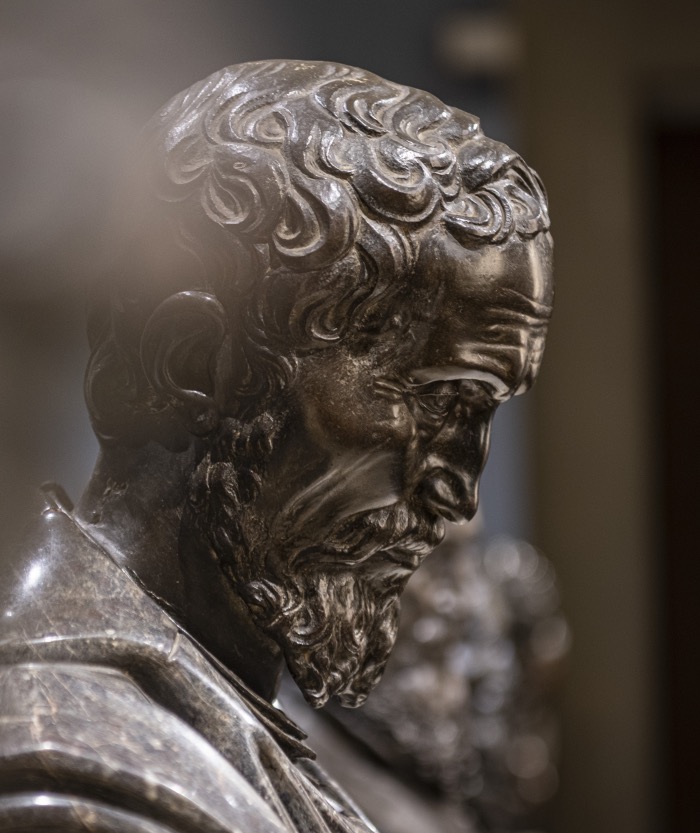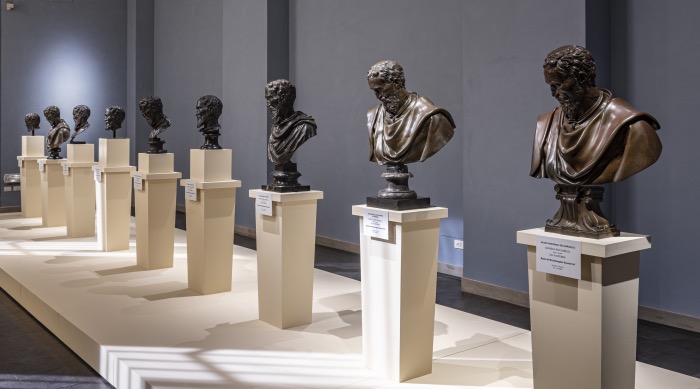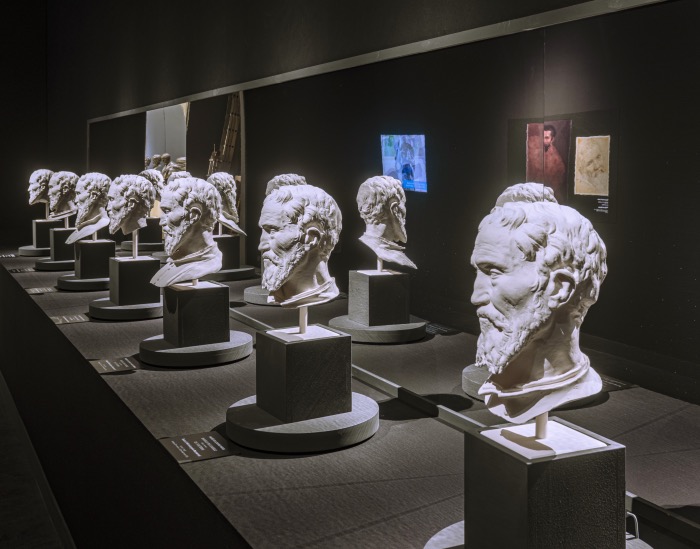
Galleria dell’Accademia di Firenze – allestimento mostra- foto Guido Cozzi
DANIELE DA VOLTERRA AND MICHELANGELO’S BRONZE PORTRAITS
Daniele Ricciarelli, known as Daniele da Volterra (1509 – 1566), was a friend and pupil of Michelangelo Buonarroti and was present at the master’s death in his Roman home on 18 February 1564.
By virtue of this bond between the pupil and his master, Leonardo Buonarroti, Michelangelo’s nephew, commissioned Daniele da Volterra to produce two bronze portraits of his uncle immediately after the master’s death.
This request was joined by that of the antiquarian Diomede Leoni who asked for a third bronze bust of Michelangelo.
Daniele da Volterra died in 1566, however, and was unable to finish the three busts, of which copies actually exist, leaving many questions open as to their chronology, casting and provenance.
Daniele da Volterra and Michelangelo’s bronze portraits

Galleria dell’Accademia di Firenze – allestimento mostra- foto Guido Cozzi
It has recently been possible to compare the nine existing busts bearing Michelangelo Buonarroti’s features, to review their data, documents and bibliography.
All the specimens present were subjected to an intensive campaign of non-invasive analysis, both classical of the materials and with sophisticated state-of-the-art instruments and innovative methodologies.
Scientific investigations never previously carried out on these works were conducted, such as geological analyses of the melting earth or nuclear analyses (XRF) to determine the nature and composition of the metal alloys.
Each bust was digitised and 3D printed in resin on a 1:1 scale, allowing key points to be mapped to establish correspondences and identify whether they all came from a single mould.
The research work that has been carried out is unique and, for the first time, has combined digital expertise with academic rigour in identifying the original works, named in the inventory of the house inhabited by Daniele da Volterra, and the ‘genealogy’ of the variants derived from them.

Galleria dell’Accademia di Firenze – allestimento mostra- foto Guido Cozzi

